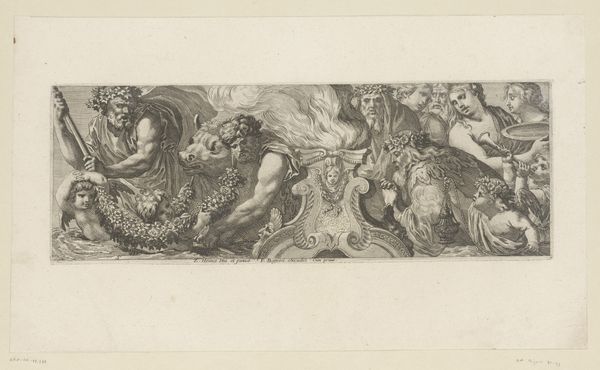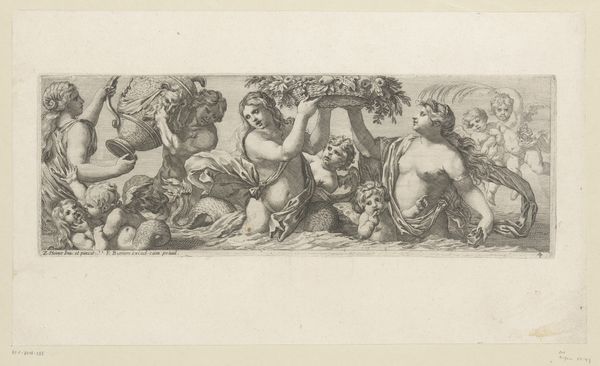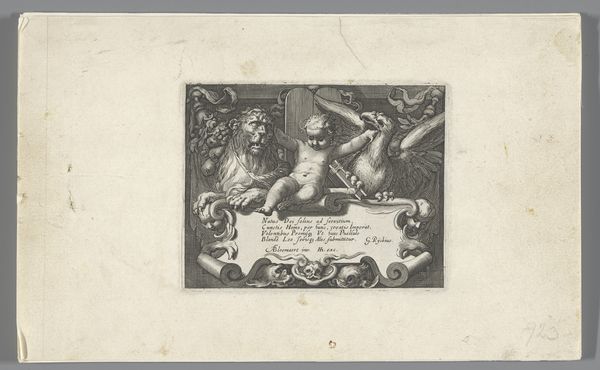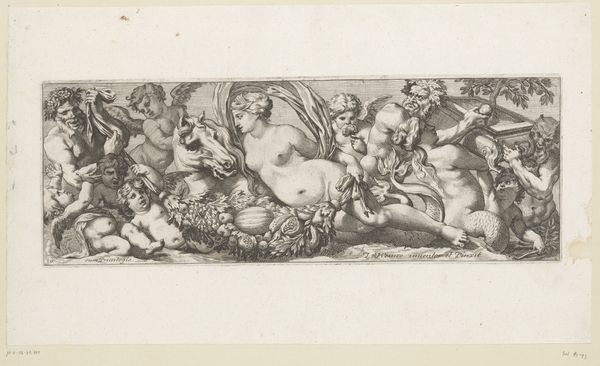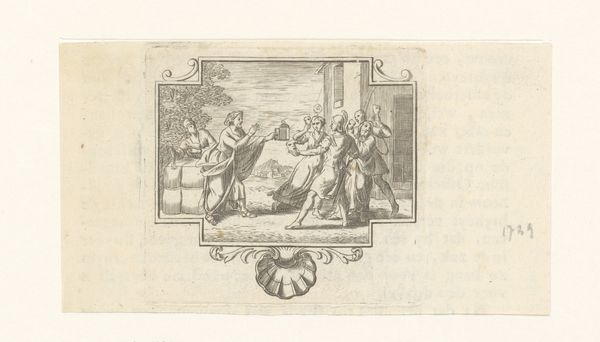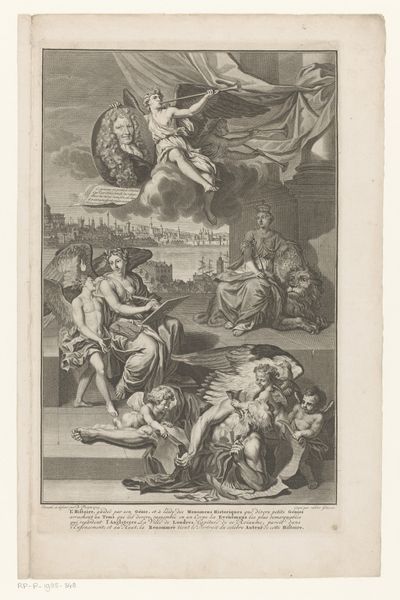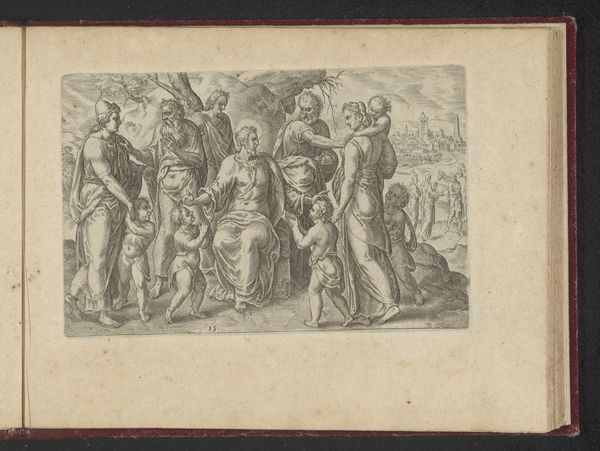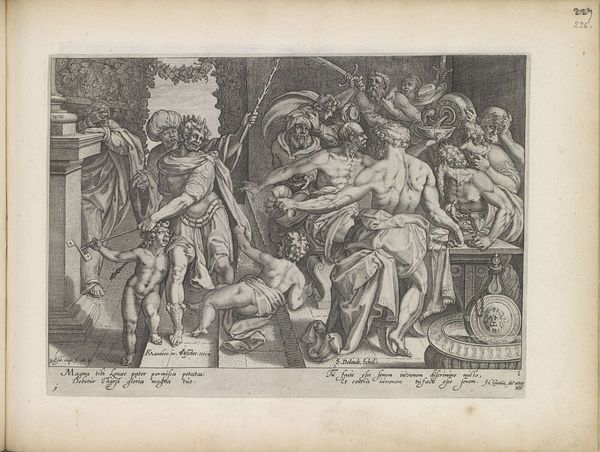
print, engraving
#
allegory
#
baroque
# print
#
old engraving style
#
figuration
#
history-painting
#
engraving
Dimensions: height 126 mm, width 375 mm, height 22 mm, width 311 mm
Copyright: Rijks Museum: Open Domain
Editor: This engraving, "Tritons en nereïden met een wapenschild," dating from 1630 to 1720 by François Bignon, features a classical scene with Tritons and Nereids. The overall impression is quite formal and symbolic. How do you interpret this work, especially considering its historical context? Curator: What I find compelling is the way this engraving participates in constructing power. Notice the heraldic shield being presented—it's not just decorative. This imagery functioned as a form of propaganda. The classical allusions evoke authority and legitimacy. Can we consider this within a framework of social hierarchy, thinking about who commissioned the work and its intended audience? Editor: So, you're suggesting that the beautiful figures are less about pure aesthetics and more about bolstering social standing? Curator: Exactly! These mythological figures aren't merely decorative; they're actively performing a role, legitimizing power. Think about how these kinds of visual statements can normalize and reinforce particular ideologies within a society. It prompts questions about art's role in upholding dominant narratives. Where do we see similar dynamics at play today? Editor: It's fascinating to consider it as a visual tool for establishing dominance. I hadn't thought about the piece so overtly reflecting power. Curator: This lens allows us to critically examine how art isn't simply a reflection of society but an active participant in shaping it. And in reinforcing those power structures in terms of race, class, gender. How might we read the idealized bodies of the Nereids, for example, within the context of gendered power dynamics of the time? Editor: This gives me a new perspective on looking at historical art; one where the politics and power dynamics are essential to a fuller appreciation. Curator: Absolutely, it is a way of disrupting traditional narratives and creating more inclusive, and intersectional ways of engaging with art.
Comments
No comments
Be the first to comment and join the conversation on the ultimate creative platform.
